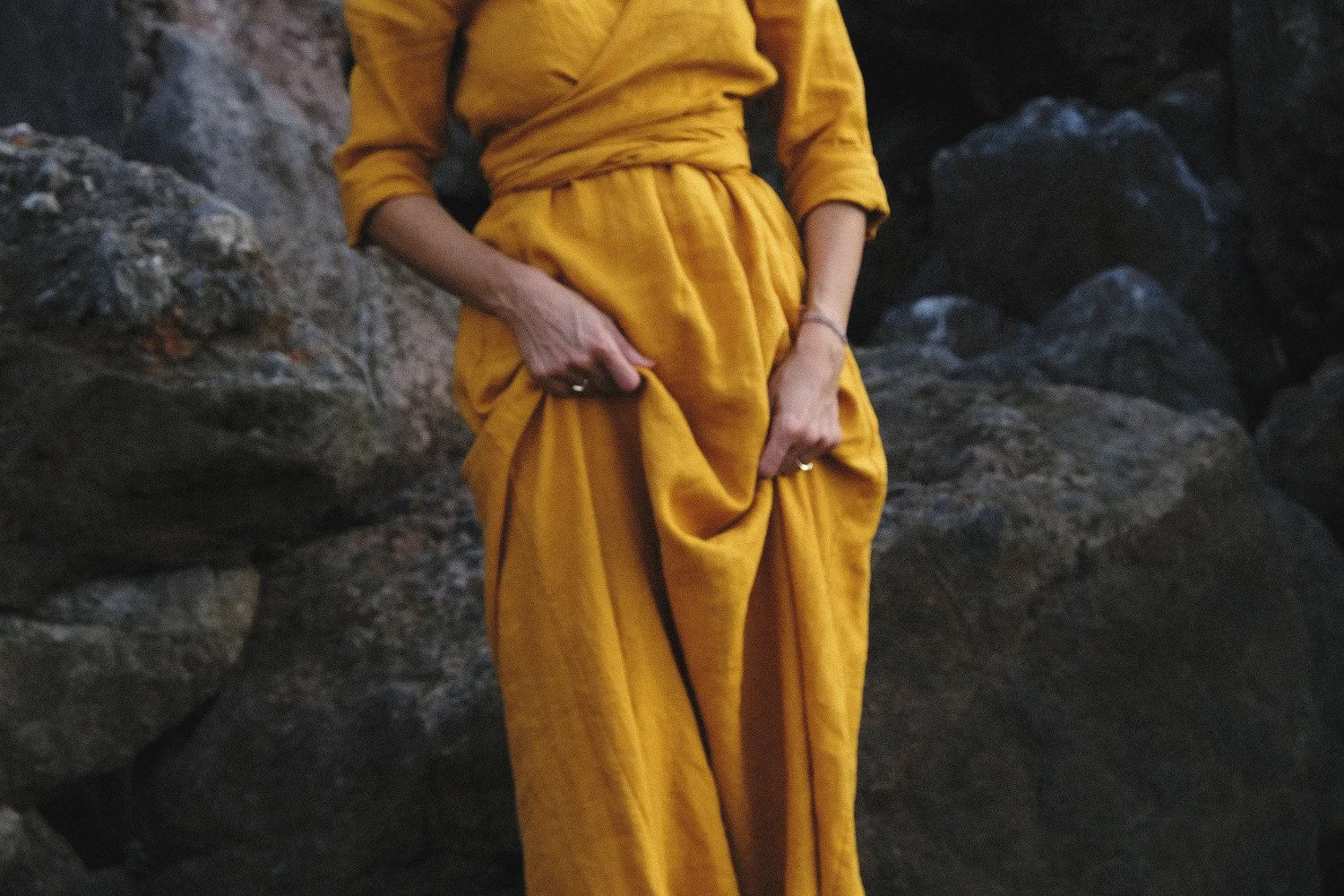Dressed to Heal: Ayurveda’s Take on Fashion and What We Should Wear to Heal
It seems that once you’ve embarked on a healing journey, nothing is off-limits. Your diet, your skincare routine, your bedtime—everything gets a holistic makeover. And yes, eventually, even your closet gets turned upside down.
Have you ever wondered why we spiritual crowd tend to float around in loose-fitting robes in shades of ivory, beige, or that unmistakable sacred saffron orange Sanyasins are wearing, signifying renunciation, spirituality, and asceticism. There’s a reason behind these color choices, and it goes far beyond aesthetics.
As I get older (and perhaps a little wiser), I’ve started to care deeply about what I wear on my skin. Not just how it looks, but how it feels. I recently joked with my Indian friend that I now prefer doing yoga in my pyjamas, because the idea of squeezing into tight, latex leggings? It feels suffocating to my skin, which, by the way, happens to be the largest organ of the body.
Ok, I’ll admit: the shift to fluffy pants might also have something to do with the slow but steady arrival of the menobelly, that seems to be here to stay. But instead of fighting it, why not wrap it in breathable, plant-dyed cotton, that turned out to be also healing?
«What you wear can empower you, why not dress for healing too?»
Fashion Meets Doshas
Those who know me know that I’m deeply spiritual—but I’ve also had a lifelong affair with fashion. I believe you can dress for success, and of course dressing up brings joy. What you wear can empower you, ground you, even contribute to manifest the life you desire– meaning to dress like the person you want to become. Textiles are woven „texts“ because they communicate in such a powerful way, textiles since ancient times have been used to, express individuality, status, beliefs and diversity. So why not dress for healing too?
Let’s talk Ayurvastra: the sacred art and science of healing textiles.
“Ayurvastra” literally means “health cloth” in Sanskrit. This ancient Ayurvedic wisdom suggests that the clothes we wear can support our well-being—when they’re made with intention, dyed with medicinal herbs, and crafted with care.
A Thread Through Time
According to the Indian Institute of Art & Design, Ayurvastra dates back to around 1500 BCE and is mentioned in the Vedas. In ancient times, warriors wore these herbal-infused garments beneath their armor to accelerate wound healing. Ayurvedic healers wrapped patients in herb-dyed bandages, while newborns were swaddled in specially processed cloths to ward off infection. Even today, Kalaripayattu martial artists wear saffron-dyed clothing, using kumkum for strength and protection.
These sacred textiles are typically made from natural fibers like cotton, silk, wool, bamboo, hemp, jute, and linen—and dyed with herbs like neem, moringa, turmeric, sandalwood, pippali, and indigo. The result? Soft, breathable fabrics that aren’t just sustainable, but healing.
For instance if one suffers from arthritis, wearing textiles dyed with curry leaves (sweet neem), acacia or pippali (Indian pepper) will benefit from their anti-inflammatory reducing properties. Ayurveda has long known: what touches your skin, touches also your panic body.
XTANT Exhibition 2025: Discovering emerging and sustainable brands and ancient craftsmenship from all over the world.
It’s said that when Ayurvastra textiles are worn close to the skin, they don’t just dress you—the healing herbs infused into the fibers metabolise via the skin and support the body’s natural healing process. Think of it as a wearable wellness ritual: organic fabrics dyed with turmeric, neem, and sandalwood that gently transfer their therapeutic properties through the skin.
Now imagine this ancient wisdom woven into modern healthcare. Hospitals designed not in sterile grays and blues, but in soothing, plant-dyed textiles that actively support healing—especially for chronic skin conditions or inflammatory imbalances.
What sets Ayurvastra further apart from regular textiles is each individual thread is dyed in herbal medicine before being woven, rather than dunking the finished garment into color.
To me, real fashion balances your doshas, and makes you look radiant while feeling so at ease you forget you’re even wearing anything at all.
Color Therapy, the Ayurvedic Way
Let’s not forget: in Ayurveda, color matters. Just like food, certain colors can soothe or aggravate your dosha.
Vata types: Light, airy, and prone to overstimulation, should avoid overly bright or cold tones like neon or stark black. Instead, wrap yourself in warm earthy tones, like soft ochres, creamy beiges, light browns, gentle pastels (think butter yellow and terracotta), and ivory. Add golden jewelry for a grounding sparkle.
Pitta types: Fiery and intense, benefit from cooling shades. Embrace blues, lavenders, blue-greens, and moon-like silvers. Soft silks, linen, and pearl accessories help pacify that inner heat. Sure, a vibrant mango orange can be stunning, but maybe skip it during August heatwaves or fiery life phases.
“Detox your wardrobe by choosing chemical-free-clothing in natural materials”, says designer Celia Ingelsson from Greeningline





